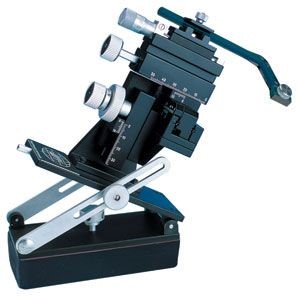Microinjection as a biological procedure began in the early twentieth century, although even though the 1970s it was not commonly used. So basically Microinjection is the use of a glass micropipette to inject a liquid substance at a microscopic level. This injection is a proven and relatively simple method for introducing DNA into worms. Though this process has a very low success rate but very quickly this process will get the highest success rate.
DNA transformation techniques are typically required to co-transformation with a scoreable or selectable marker gene. Transformation markers that induce a dominant phenotype allow the transformation of any animal strain as long as the host’s phenotype does not interfere with the marker-induced phenotype. Other selectable markers rescue lethal or non-lethal mutations and require the use of specific mutant strains as transformation hosts. Some mutant rescue experiments, a co-injected marker may not be necessary but it is usually advisable as a positive control for transformation.
We have discovered WPI MICRO-ePORE, as an advanced tool & technique. This machine can ensure a much better success rate time. WPI MICRO-ePORE, works as DNA Microinjection has wider benefits. DNA is inserted into animal cells using microinjection. This machine has a touch screen display, user can adjust frequency and voltage through the touch screen. This machine can control injection through foot switch or manually through the touch screen. It has an adjustable audio continuity tone indicating an active probe Injection counter to indicate the total number of injections.
Benefits of using WPI MICRO-ePORE:-
- Works with all major inverted microscopes
- User adjustable frequency and voltage that is four programmable protocols
- Easy to operate – Hands-free operation with foot switch control
- Increase the viability of injected embryos
- Easy to operate – Hands-free operation with foot switch control
- Pre- and post-implantation in embryos of various species – mice, rodents, monkeys, bovine, pigs, zebrafish, etc.
Microinjection is an active method for creating transgenic animals. It is easy to learn and does not require the most expensive equipment. This method described below is geared towards generating transgenic animals, during the process of genetic transformation. Transgenic animals are defined as animals in which new or altered genes have been experimentally inserted into their genome by genetic engineering techniques. They are routinely used in the laboratory as a model in Bio-medical research. Mice are the model of choice, not only because there is an extensive analysis of its completed genome sequence, but its genome is similar to the human.
Advantages and disadvantages of transgenic animals
Advantages:-

1. It has been estimated that transgenic animal can produce in its lifetime $100 to $200 million worth of pharmaceuticals.
2. The isolation and purification of expressed protein in the conventional method are more difficult than purifying proteins from an animal’s milk or body fluid.
3. Expression through cell culture or bacterial culture requires constant monitoring and sampling.
4. It is more cost effective as the product is efficiently passed through milk with an average yield of 53% and with 99% purity.
5. Gene requires a certain cellular mechanism to help for the production of protein.
Disadvantages:-
1. A large number of recipients are required for embryo transfer because of the low transgenesis rate.
2. The generation of transgenic animals is also expensive, because of long gestation period, litter size and higher maintenance cost of the recipient animals.
3. The transgenic animal project is extremely expensive.